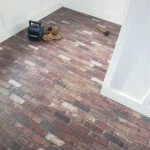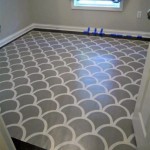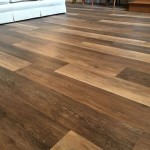Vinyl tile flooring is an affordable and durable option that can be used in any room of your home, including the kitchen. The tiles come in a variety of colors and designs, making it easy to create a unique look for your kitchen. In addition, vinyl tile flooring is easy to install, which makes it a great choice for do-it-yourselfers. Below, we discuss the benefits of vinyl tile flooring for your kitchen, as well as provide tips for installation.
Benefits of Vinyl Tile Flooring for Your Kitchen
Vinyl tile flooring has a number of benefits that make it an ideal choice for your kitchen. First, it is extremely durable and can withstand the wear and tear of busy kitchens. The tiles are also water-resistant, making them a great choice for kitchens that are exposed to moisture. Furthermore, vinyl tile flooring is easy to clean and maintain. It is also affordable, which makes it a great option if you are on a budget.
Styles and Colors of Vinyl Tile Flooring
Vinyl tile flooring comes in a variety of styles and colors. You can choose from a variety of natural stone looks, such as marble, slate, and travertine. You can also find vinyl tiles that mimic hardwood floors, giving you the look of wood without the expense. The tiles come in a range of colors, from light beiges and blues to dark browns and blacks, so you can find a tone that works for your kitchen.
Installation Tips for Vinyl Tile Flooring
Installing vinyl tile flooring is relatively easy, but there are a few key steps that you should follow to ensure a successful installation. First, you should make sure that the surface is clean and free of debris. You should also check the area for any moisture, as vinyl tiles are not suitable for wet surfaces. You will also need to measure the area where the tiles will be installed and purchase the correct amount of tile.
Once you have the tiles, you should layout a pattern to determine the best placement. You can use a chalk line to mark the pattern, or you can use a tile-laying tool for a more precise layout. Once you have the pattern determined, you can begin to install the tiles, using a trowel to spread the adhesive and lay the tiles. Make sure that you apply pressure to the tiles to ensure a secure fit.
Once the tiles are installed, you should leave them to dry for at least 24 hours before using the kitchen. After the adhesive has dried, you can apply caulk around the perimeter to seal the edges and protect the tiles from water damage. Lastly, you can grout the tiles to add a finished look and protect them from dirt and bacteria.
Conclusion
Vinyl tile flooring is an affordable and durable option for your kitchen. It comes in a variety of colors and styles, allowing you to create a unique look. The tiles are easy to install, and they are water-resistant and easy to clean. Following the tips above can help you achieve a successful installation of vinyl tile flooring in your kitchen.















Related Posts








